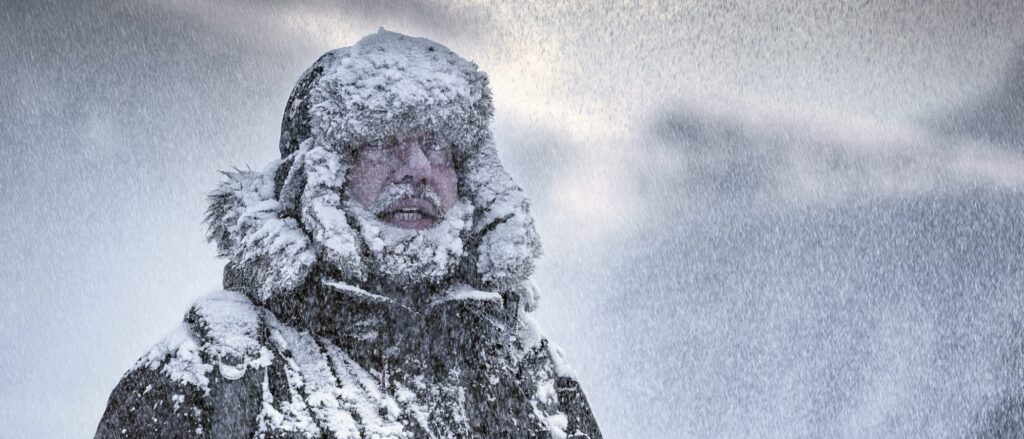Cold weather can pose serious health risks for anyone who is not prepared or dressed warmly enough. Exposure to low temperatures can cause frostbite, hypothermia, heart problems, and other complications. However, following some simple tips and precautions, you can enjoy the winter season safely and comfortably.
What is Extreme Cold, and How Does It Affect Your Body?
Extreme cold is a temperature much lower than usual for a specific region or season. The effects of extreme cold on your body depend on factors such as wind chill, humidity, clothing, physical activity, and health conditions.

When exposed to cold air, your body tries to maintain its average temperature by constricting blood vessels and shivering. This reduces heat loss from the skin and generates heat from the muscles. However, if the cold exposure is prolonged or severe, your body may be unable to keep up with the heat loss, and your core temperature may drop below 37°C (98.6°F). This can lead to serious health problems such as:
- Frostbite: This is a condition where the skin and underlying tissues freeze due to low blood flow and low temperature. Frostbite usually affects the extremities, including the fingers, toes, nose, and ears. The signs of frostbite include numbness, tingling, pain, blisters, and white or grayish skin. Severe frostbite can result in permanent damage or amputation.
- Hypothermia is when the body temperature drops below 35°C (95°F) due to excessive heat loss. Hypothermia can affect the brain and other vital organs, impairing their functions. The signs of hypothermia include shivering, confusion, drowsiness, slurred speech, weak pulse, and slow breathing. Severe hypothermia can result in unconsciousness or death.
- Heart problems: Cold weather can increase the risk of heart attack and stroke by increasing blood pressure and heart rate and making the blood more prone to clotting. Cold weather can also trigger chest pain or angina in people with coronary artery disease. People with existing heart conditions should be cautious when exercising or shoveling snow in the cold.
- Respiratory problems: Cold air can irritate the lungs and airways, causing coughing, wheezing, shortness of breath, or asthma attacks. People with chronic lung diseases such as asthma, chronic obstructive pulmonary disease (COPD), or bronchitis should avoid breathing cold air directly and use a scarf or mask to cover their mouth and nose.
How to Prevent and Treat Cold Weather Injuries
The best way to prevent cold weather injuries is to dress warmly and appropriately for the weather conditions. Here are some tips on how to dress for the cold:
- Wear layers of clothing that are loose-fitting, lightweight, and breathable. The inner layer should be made of synthetic or wool fabrics that wick moisture away from the skin. The outer layer should be windproof and water-resistant to protect you from the wind and snow.
- Wear a hat that covers your ears and head. Up to 40% of body heat can be lost through the head.
- Wear mittens or gloves that are insulated and snug at the wrist. Mittens are warmer than gloves because they keep the fingers together.
- Wear warm socks that are made of wool or synthetic fibers. Avoid cotton socks that absorb moisture and make your feet colder.
- Wear boots that are waterproof and have good traction. Ensure they are not too tight or loose to allow proper blood circulation.
- Wear a scarf, neck warmer, or face mask to cover your nose and mouth. This will help warm the air you breathe and prevent frostbite on your face.
- Avoid wearing wet clothing. Wet clothing can lower your body temperature and increase your risk of hypothermia.

In addition to dressing warmly, here are some other tips on how to prevent cold-weather injuries:
- Check the weather forecast before going out. Pay attention to the temperature and the wind chill factor. The wind chill factor is how cold it feels on your skin when the wind is blowing. The lower the wind chill factor, the higher the risk of frostbite and hypothermia.
- Plan and limit your time outdoors when it is very cold or windy. If possible, avoid going out during the most challenging part of the day or night.
- Stay dry and hydrated. Drink plenty of fluids to prevent dehydration, but avoid alcohol and caffeine as they can cause your body to lose heat faster.
- Keep moving to generate body heat and improve blood circulation. However, avoid overexerting yourself as this can make you sweat and lose heat faster.
- Seek shelter from the wind as much as possible. Wind can increase heat loss from your body by removing the layer of warm air around you.
- Be aware of the signs and symptoms of frostbite and hypothermia. If you notice any of them, get medical attention as soon as possible.
- Treat frostbite by gently warming the affected area with warm water or body heat. Do not rub or massage the site, which can cause more damage. Do not use direct heat, such as a heating pad, fireplace, or stove, as this can burn the skin.
- Treat hypothermia by moving the person to a warm place and removing wet clothing. Wrap the person in blankets or clothes and give them warm, non-alcoholic drinks. Call 911 and perform CPR if you are trained if the person is unconscious or not breathing.
How to Enjoy Winter Activities Safely and Comfortably

Winter can be a wonderful time to enjoy outdoor activities and sports such as skiing, skating, snowshoeing, sledding, and snowman building. However, these activities also pose some risks and challenges in cold weather. Here are some tips on how to enjoy winter activities safely and comfortably:
- Choose an activity that suits your fitness level and experience. If you are new to a winter sport, take lessons from a qualified instructor and use proper equipment.
- Check the weather and trail conditions before you go. Avoid going out in extreme cold, high winds, or poor visibility. Follow the rules and signs of the trail or facility you are using.
- Dress appropriately for the activity and the weather. Wear layers of clothing that you can adjust as needed. Wear a helmet, goggles, gloves, and boots that fit well and protect you from injury.
- Warm up before you start and cool down after you finish. Stretch your muscles and joints to prevent injuries and soreness.
- Stay with a buddy or a group and let someone know where you are going and when you expect to return. Carry a cell phone or a whistle in case of emergency.
- Be respectful of other people and animals on the trail or facility. Share the space and follow the right of way rules.
- Have fun and enjoy the beauty of winter!
Conclusion
Cold weather can be harsh and hazardous, but it can also be fun. Following simple tips and precautions, you can protect yourself from cold weather injuries and enjoy winter activities safely and comfortably. Remember to dress warmly, stay dry, keep moving, seek shelter, be aware, treat injuries, and have fun!

